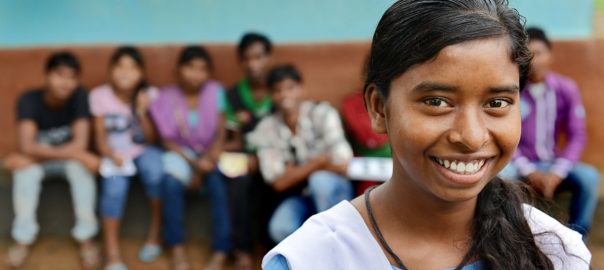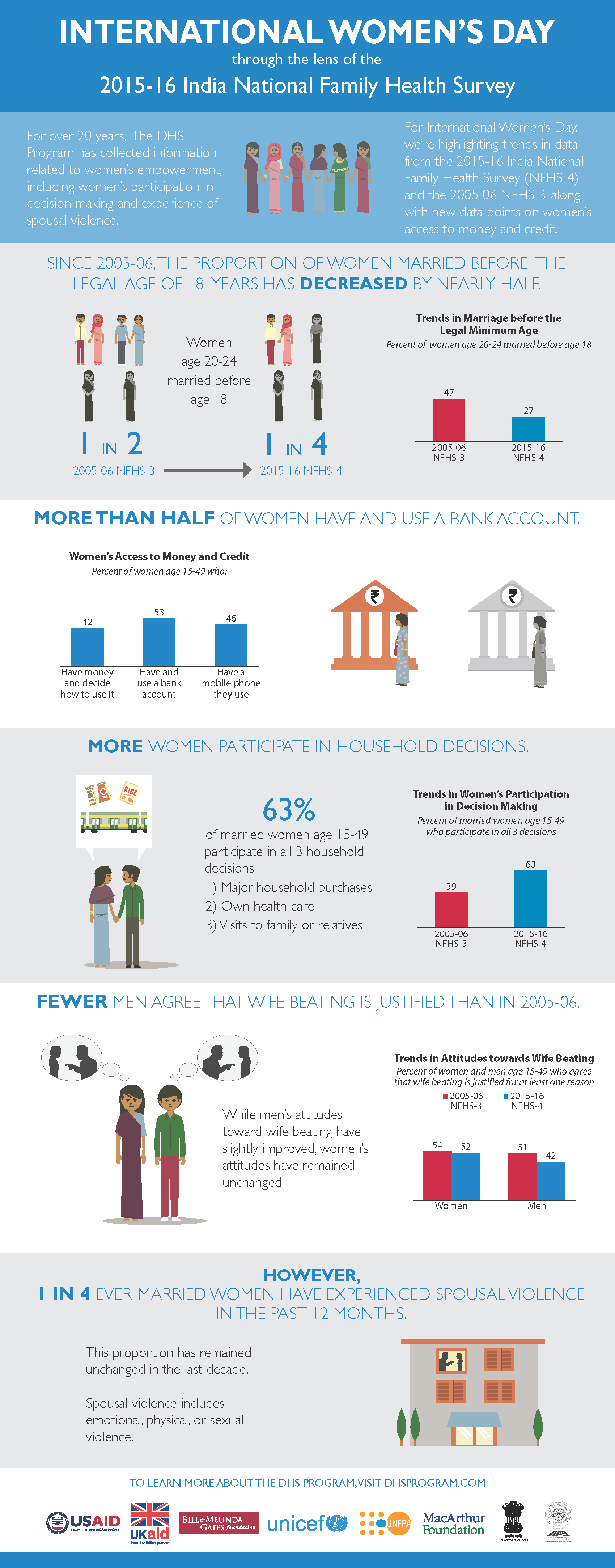International Women’s Day through the lens of the India National Family Health Survey

For over 20 years, The DHS Program has collected information related to women’s empowerment, experience of spousal violence, women’s participation in decision making, and, more recently, women’s access to money and credit.
International Women’s Day is the perfect opportunity to celebrate the progress women have made based on one of our most highly anticipated surveys. The 2015-16 India National Family Health Survey (NFHS-4) comes 10 years after the previous 2005-06 India NFHS-3. Since then, early marriage (before the legal age) has become less common, more married women age 15-49 are participating in all 3 household decisions, and fewer men agree that wife beating is justified. Fertility is also approaching replacement level with women in India having an average of 2.2 children, down from 2.7 children per woman in 2005-06.
But there is still room for improvement. Less than one-third (31%) of married women age 15-49 in India are employed compared with 98% of men. 1 in 4 ever-married women have experienced spousal violence in the past 12 months and this proportion has remained unchanged in the last decade. Only 14% of women who have ever experienced violence have sought help to end the violence.
And for the first time, NFHS-4 provides district-level estimates for most indicators. Discover more in the 2005-16 NFHS-4 State Reports.
You can still get involved on International Women’s Day by sharing this infographic on women’s empowerment in India on Facebook. Compare other women’s empowerment indicators across over 90 countries using this easy-to-use mini-tool and even more on STATcompiler.
Download the 2015-16 India National Family Health Survey dataset here.
Photo Credit: © 2014 Prasanta Biswas, Courtesy of Photoshare


